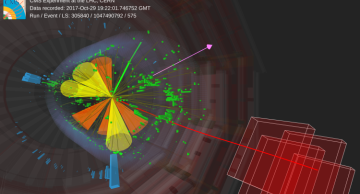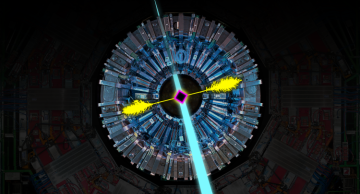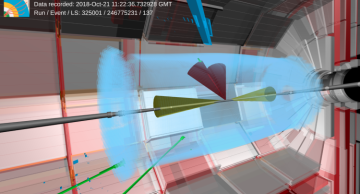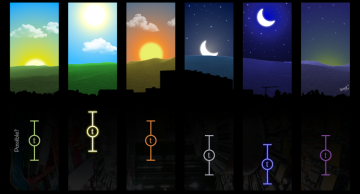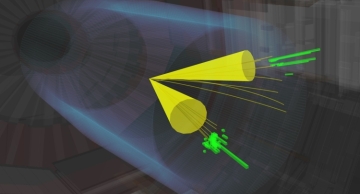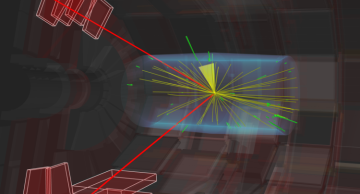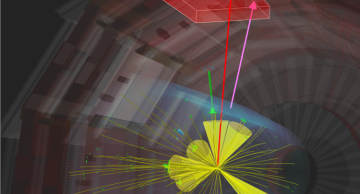The Higgs boson is deeply connected to the mechanism that generates the masses of elementary particles. In the Standard Model (SM), which describes the properties of all elementary particles and the interactions among them, the Higgs boson…
News
|
maiqbal |
Physics
CMS scientists discover some of the rarest collisions that the LHC can produce – such as the scattering of light by light – and learn more about the quantum nature of electromagnetism, search for new particles, and much more.
In everyday life…
|
maiqbal |
Physics
In a recent result, the CMS experiment has combined a comprehensive set of searches for the production of not one but two Higgs bosons – the result is a significant step towards observation of this elusive process, and constitutes a legacy of…
|
maiqbal |
Physics
In a first measurement of its kind at the LHC, the CMS experiment tests whether top quarks adhere to Einstein’s special theory of relativity, and improves the bounds on noncompliance by up to a factor of one hundred with respect to previous…
|
maiqbal |
Physics
Going back to the origins, in a latest result, the CMS experiment rediscovers the Higgs boson and measures its rate of production in the "golden channel", now at the unprecedented centre-of-mass energy of 13.6 TeV.
The discovery of the Higgs…
|
maiqbal |
Physics
In a recent result, the CMS experiment measures the production of charmed D0 mesons in collisions of a photon with a heavy lead nucleus for the first time.
Atomic nuclei are made up of protons and neutrons, which in turn are made up of more…
|
maiqbal |
Physics
The CMS Collaboration has announced 14 new results for summer topical conferences – Higgs Hunting 2024, Hard Probes 2024, and TOP 2024.
In HIG-22-013, we present a search for a heavy scalar or pseudoscalar boson decaying to a top quark-antiquark…
|
maiqbal |
Physics
In an extraordinary feat of precision physics, CMS measures the mass of the W boson, and finds it to be in good agreement with the prediction by the Standard Model of particle physics.
In the most precise measurement of its kind ever obtained at the…
|
maiqbal |
Physics
A primary goal of the Large Hadron Collider (LHC) is to hunt for evidence of beyond the Standard Model (BSM) dynamics through deviations from the Standard Model (SM) predictions. If the mass of BSM particles exceeds the energy accessible in…
|
ajafari |
Physics
With the discovery of the Higgs boson in 2012, an important piece in our puzzle to understand the Universe was found. However, there are still many open questions: why is the Higgs boson so light? What is dark matter? How does gravity work at…
|
maiqbal |
Physics
The Higgs boson is a fascinating elementary particle, and its discovery twelve years ago cemented the standard model (SM) of particle physics as the most accurate description of nature at and below the electroweak energy scale. However, many…
|
maiqbal |
Physics
At the LHC, lead ions are smashed together at extremely high speeds to create a unique state of matter called the quark gluon plasma. Normally, quarks and gluons, such as those that make up lead ions, are confined within protons and neutrons…

